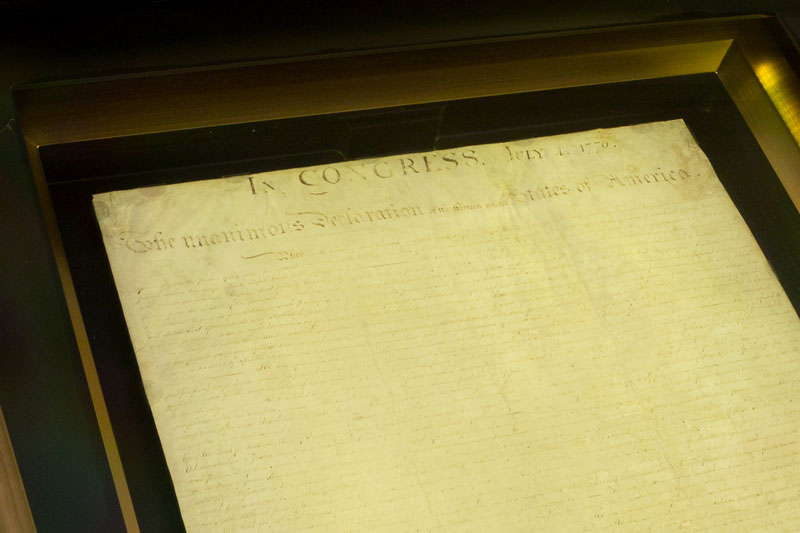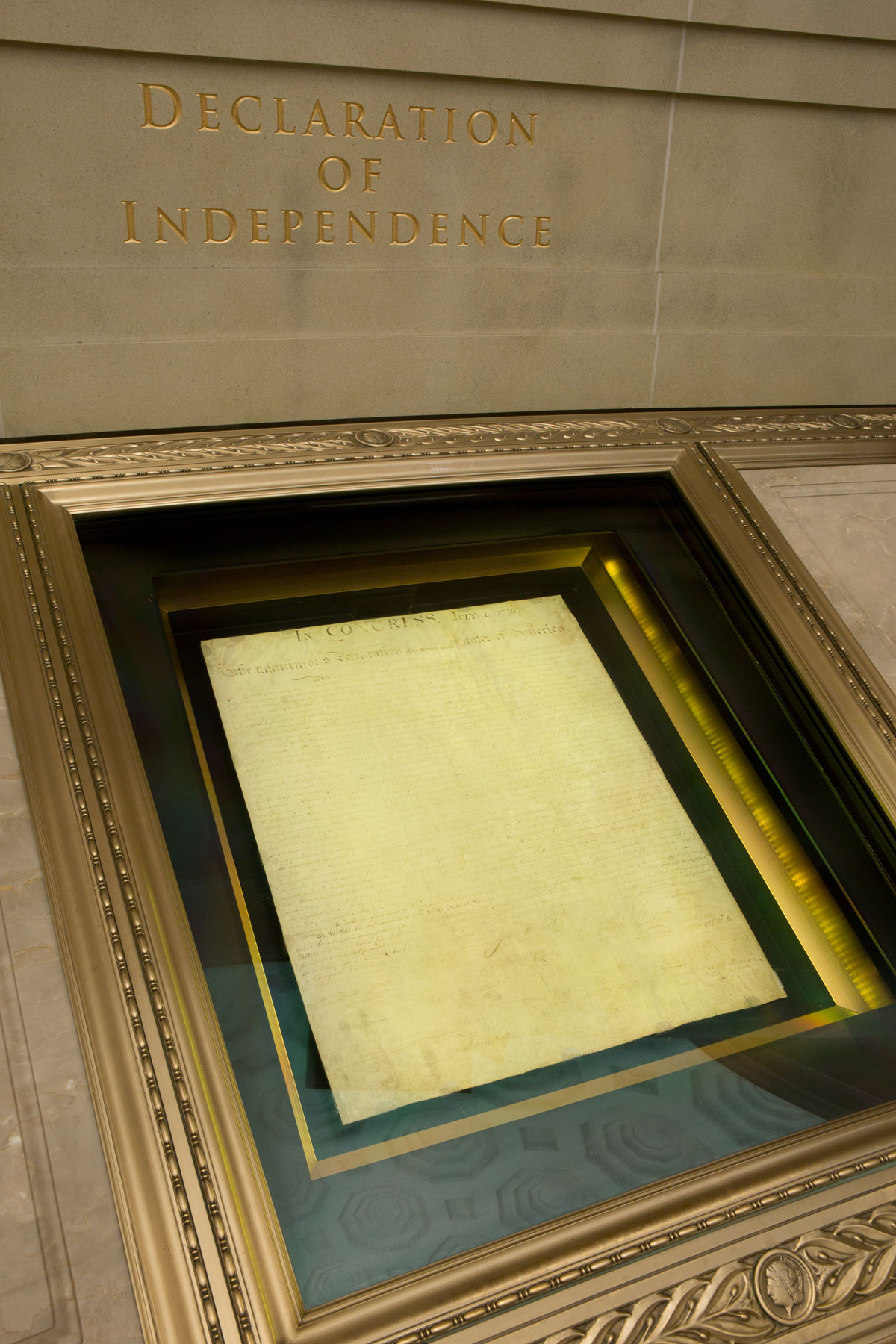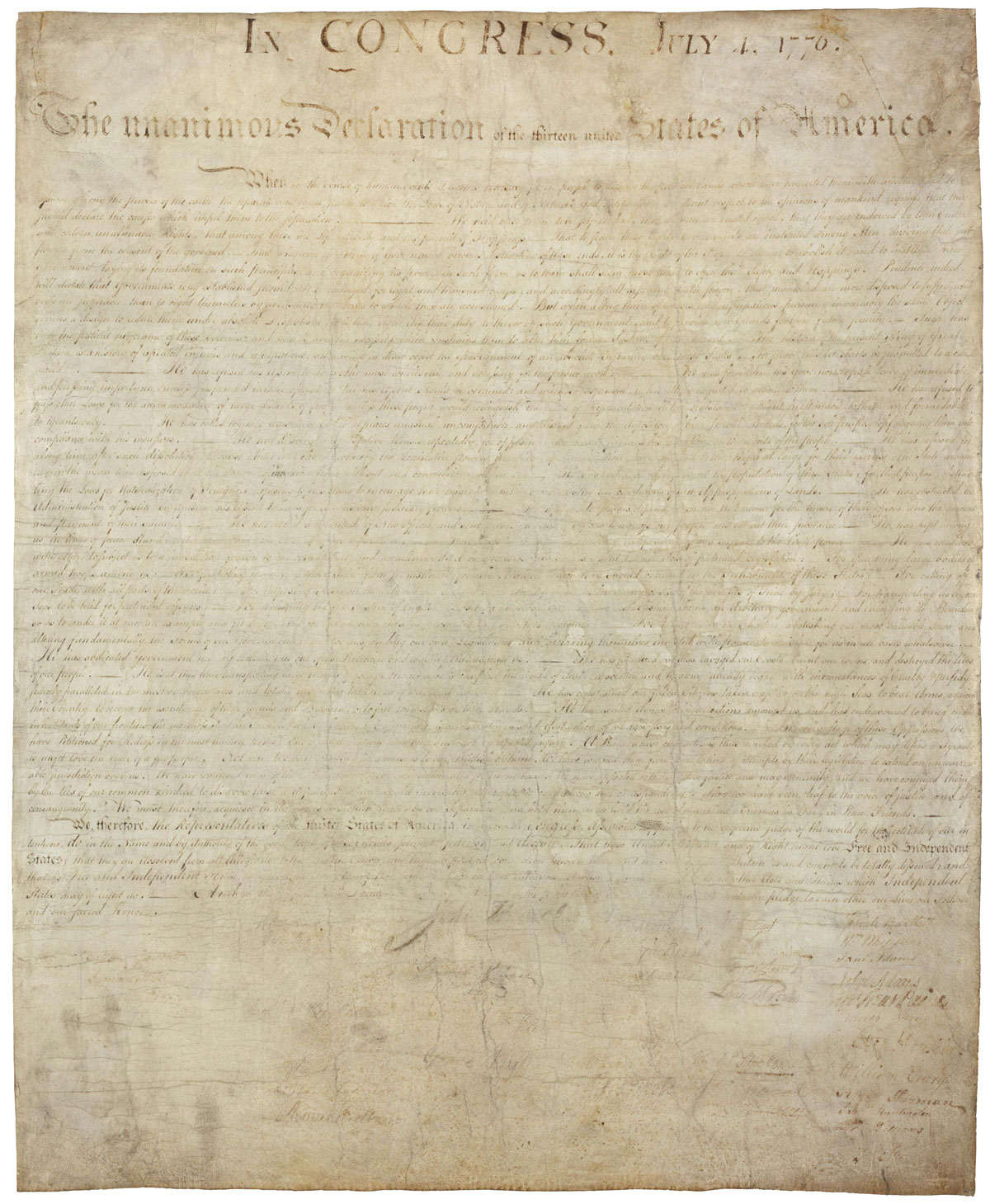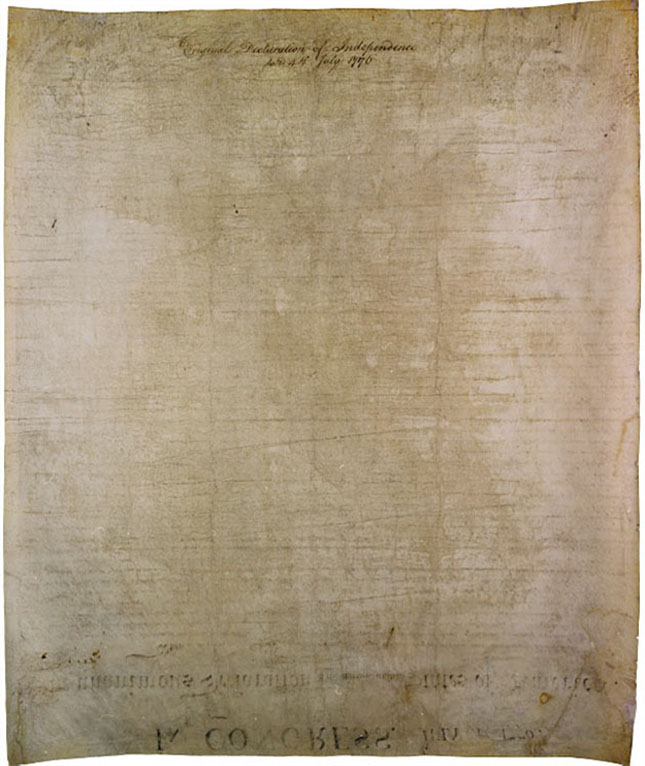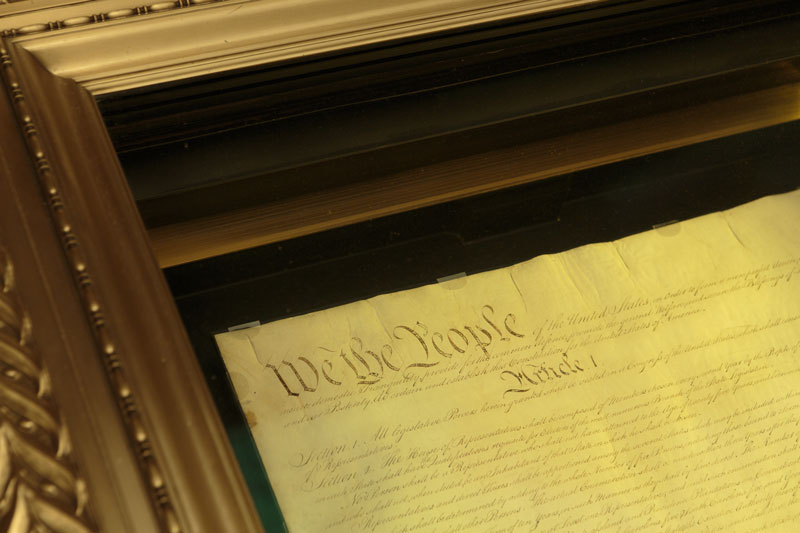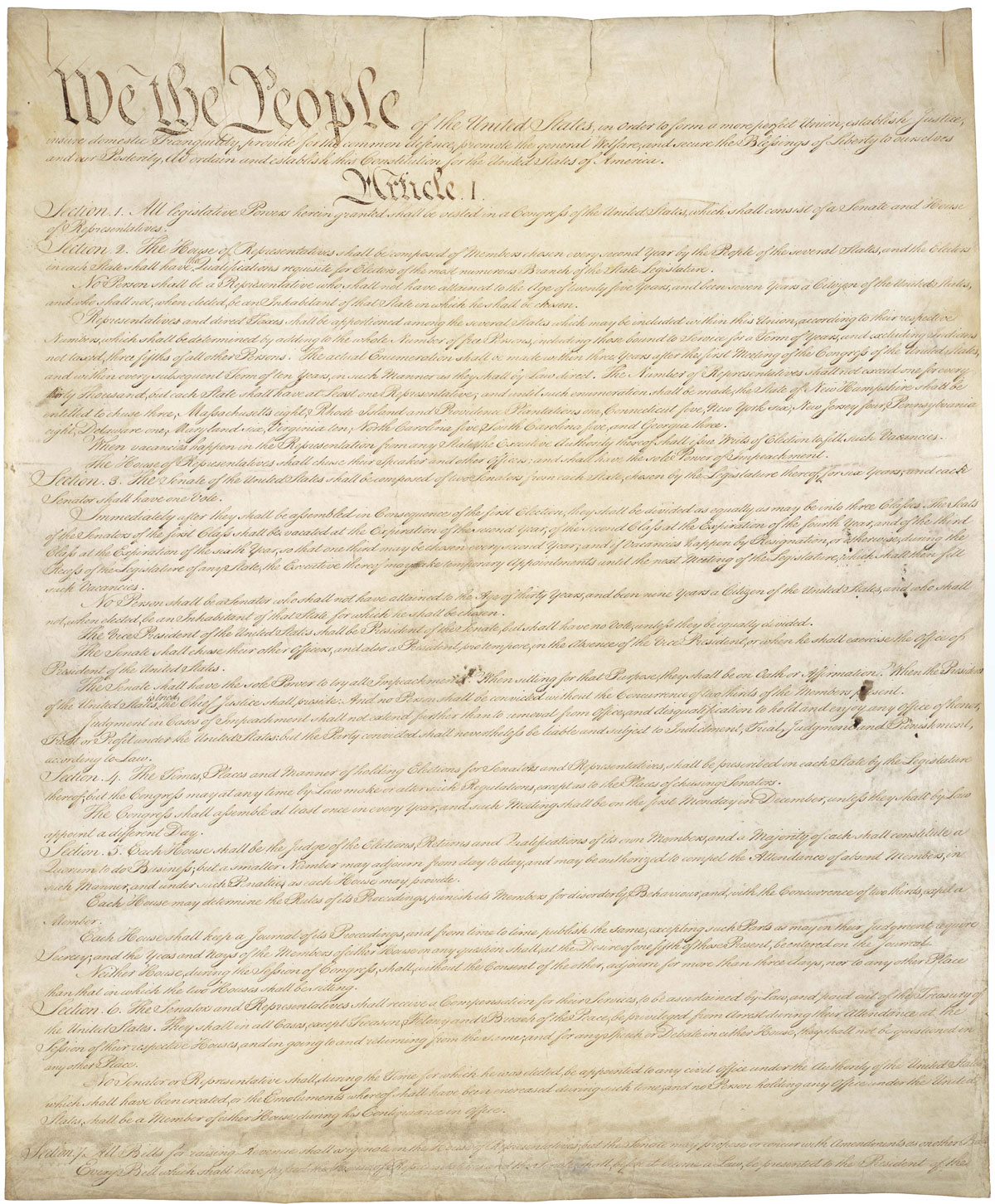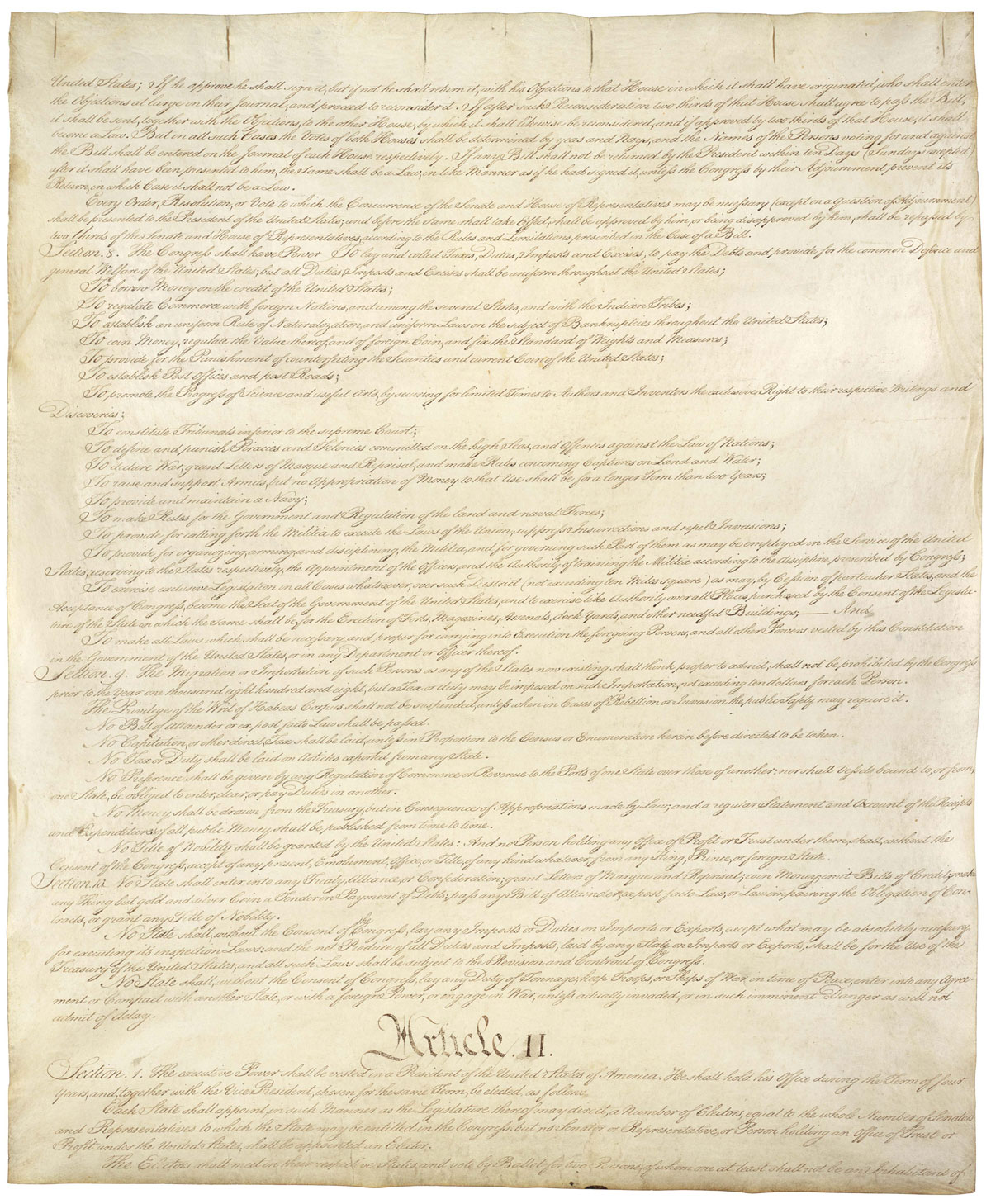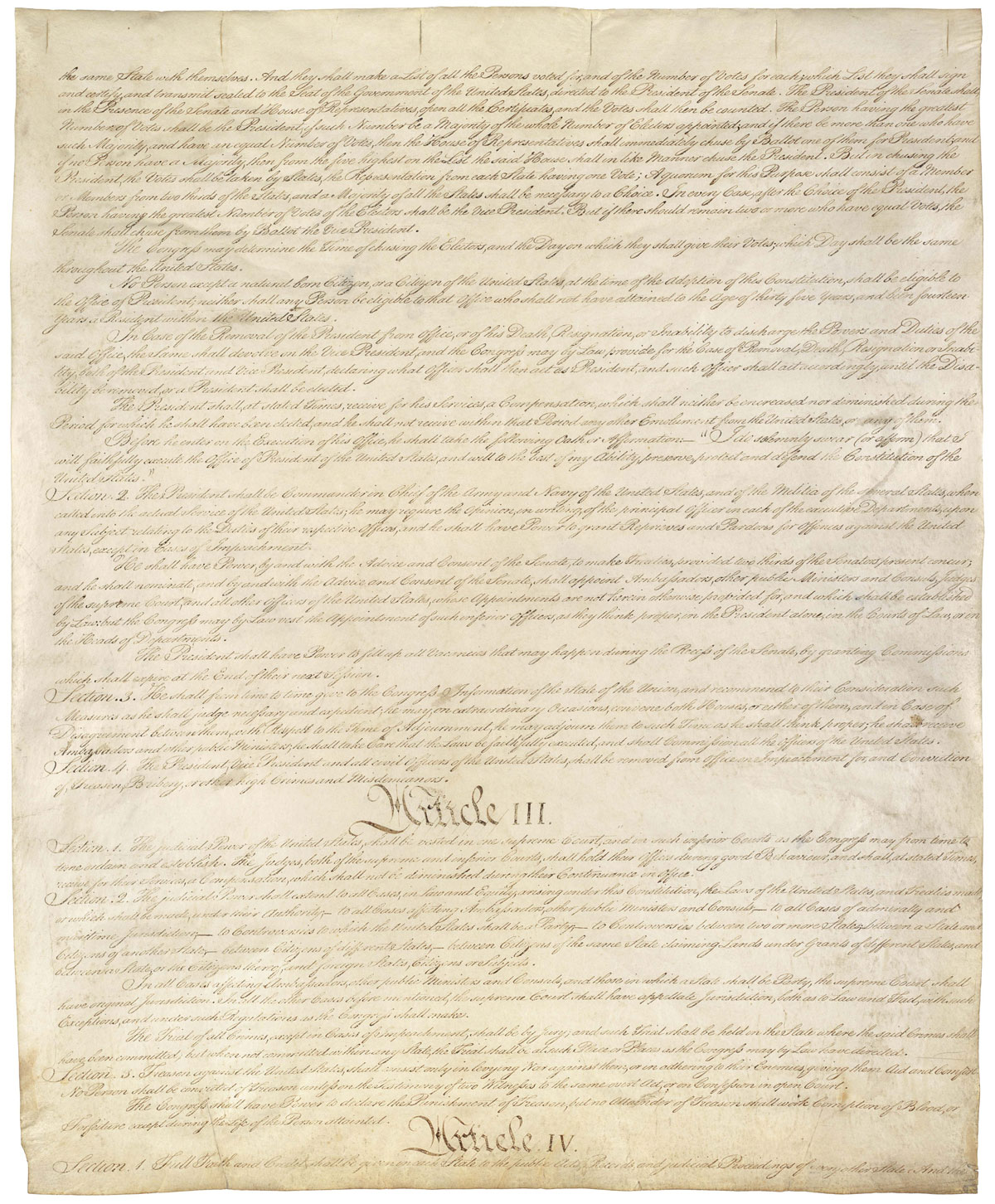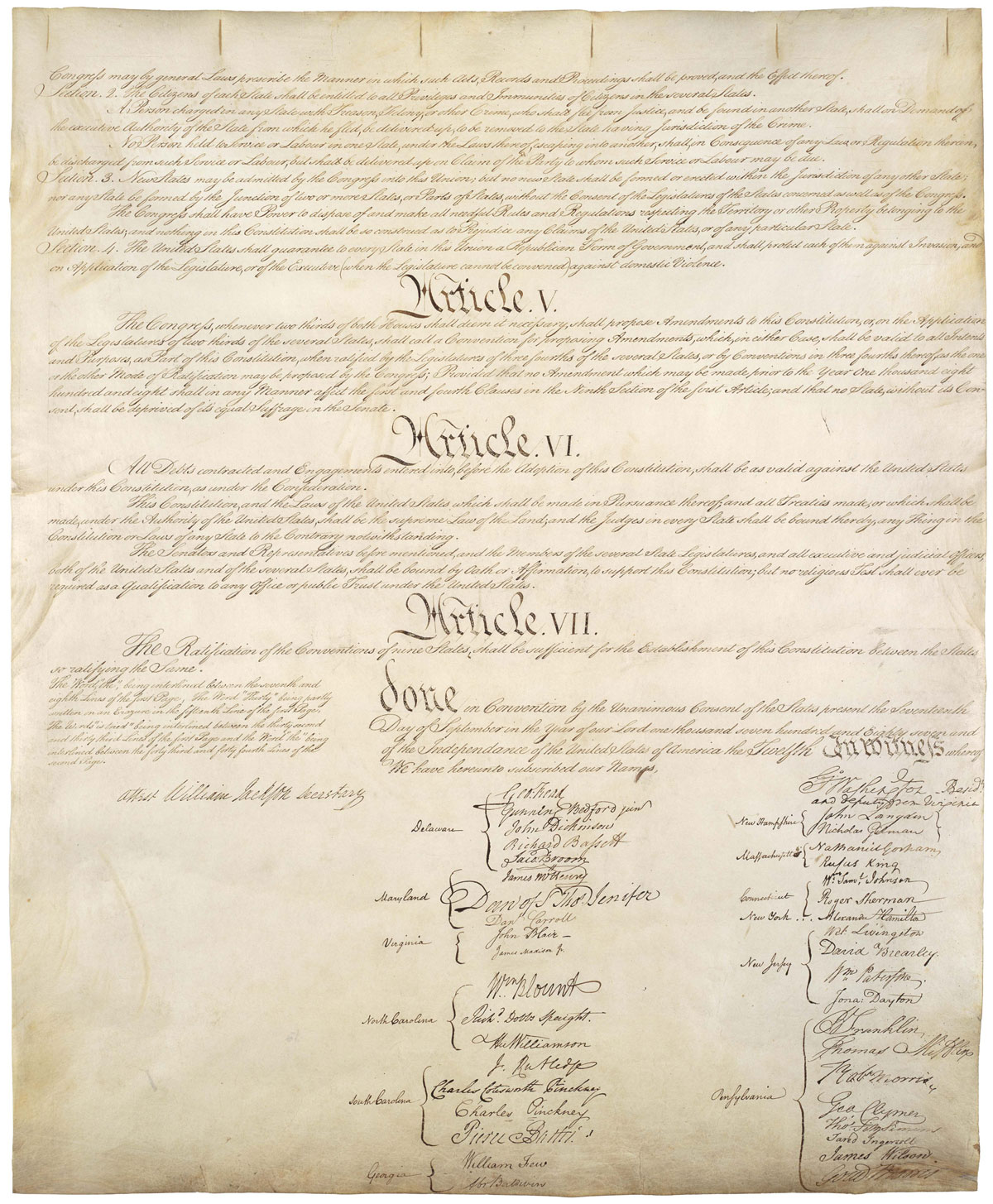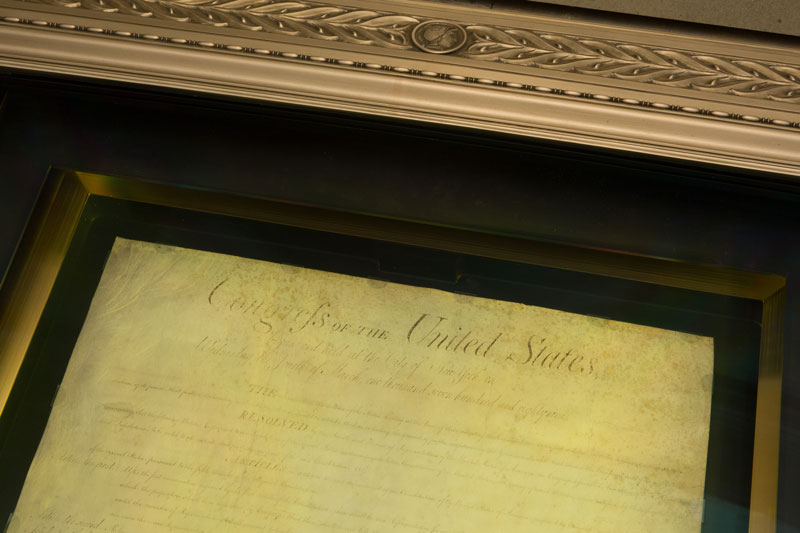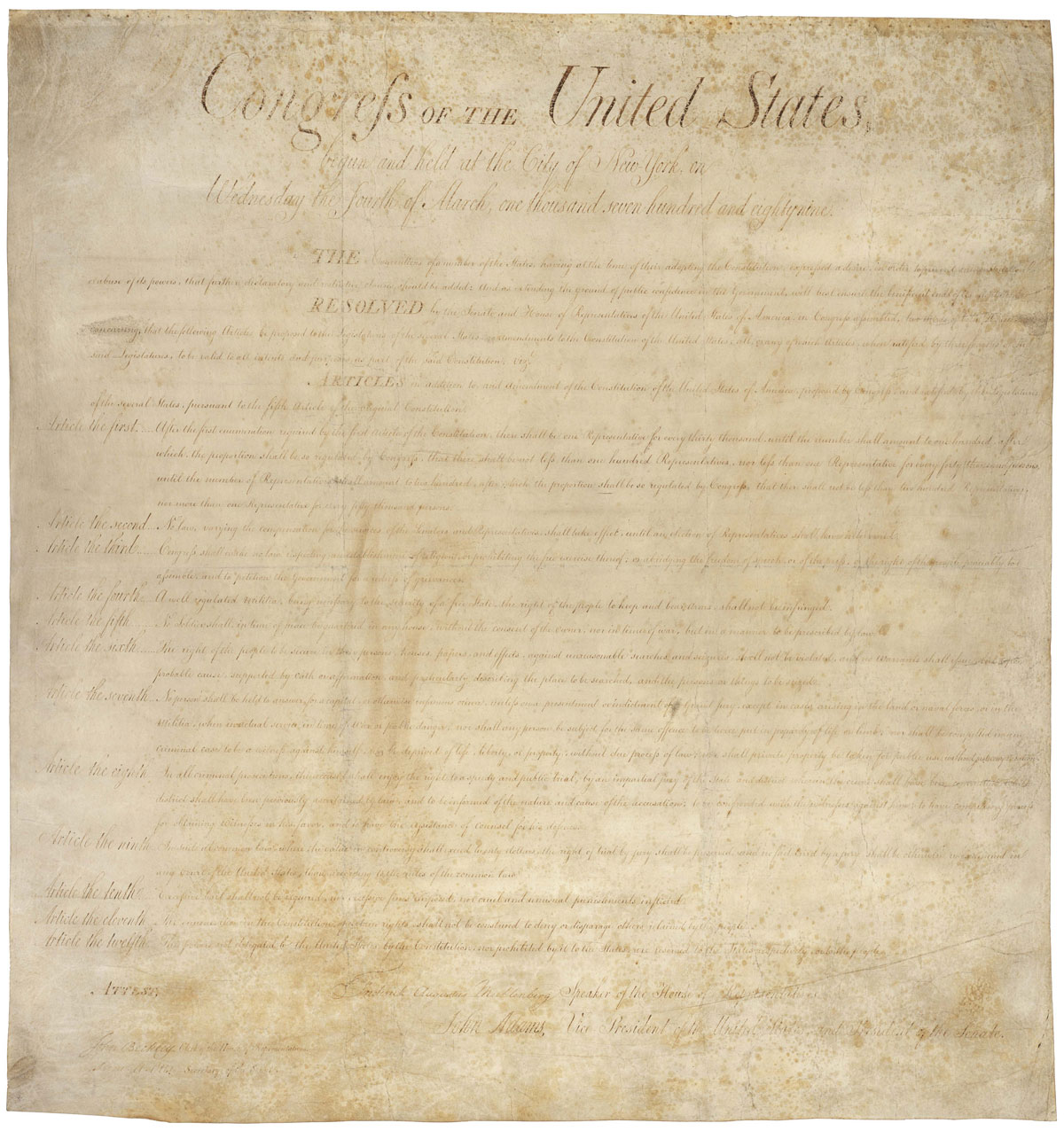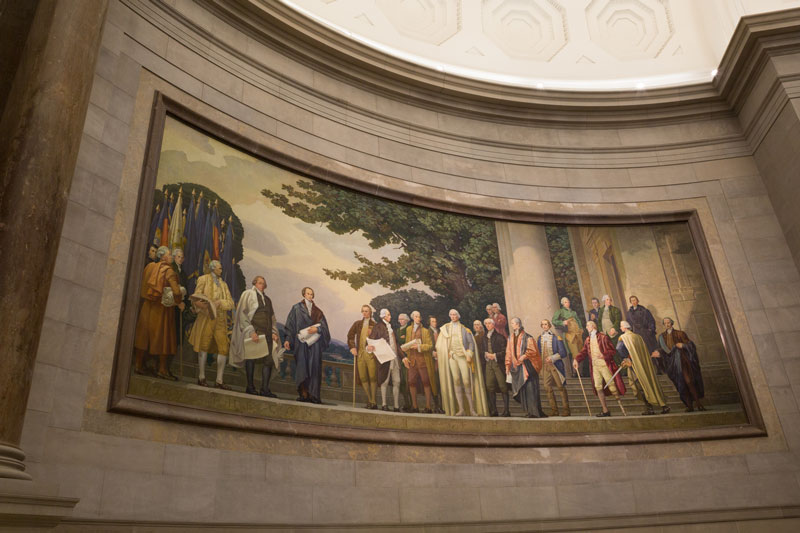
Encounter the original founding documents of the United States in the Rotunda for the Charters of Freedom, the permanent home of the Declaration of Independence, Constitution of the United States, and Bill of Rights. These three documents, known collectively as the Charters of Freedom, are instrumental to the founding and philosophy of the United States.
Declaration of Independence
The Declaration of Independence, written in 1776, announces a complete break with Britain and expresses the ideals on which the United States was founded: “We hold these truths to be self-evident, that all men are created equal, that they are endowed by their Creator with certain unalienable Rights, that among these are Life, Liberty and the pursuit of Happiness.”
learn more | transcript | en español
Constitution of the United States
The Constitution is the supreme law of the United States. These four large sheets of parchment define the framework and powers of the Federal Government. Written in 1787, the Constitution established an ingenious practical system of government that derives its power from “We the People of the United States” and promotes the welfare of all its citizens.
learn more | transcript | en español
Bill of Rights
The Bill of Rights protects freedom of speech, press, religion, and assembly, among many other rights. The document on permanent display in the Rotunda is the enrolled original Joint Resolution passed by Congress in 1789, proposing 12 amendments to the Constitution. The 10 that were ratified became known as the Bill of Rights.
learn more | transcript | en español
Faulkner Murals
The Faulkner Murals gracing the curved walls of the Rotunda were painted by artist Barry Faulkner in 1935–36 and depict fictional scenes of the presentation of the Declaration of Independence and the Constitution. They are among the largest single-piece oil-on-canvas murals in the United States.
Rotunda FAQs
Why is the Declaration so faded?
This parchment has been proudly displayed over many decades, including 35 years of exposure to sunlight opposite a window in the Patent Office Building. Today, it is sealed in the most scientifically advanced housing that preservation technology can provide.
Why is it so cold and dark in the Rotunda?
Cooler temperatures prolong the life of documents. Light fades ink and destroys parchment and paper, so light levels in the Rotunda are deliberately kept low.
Is photography allowed?
Non-flash photography is encouraged in all public areas of the National Archives Museum unless otherwise posted.
